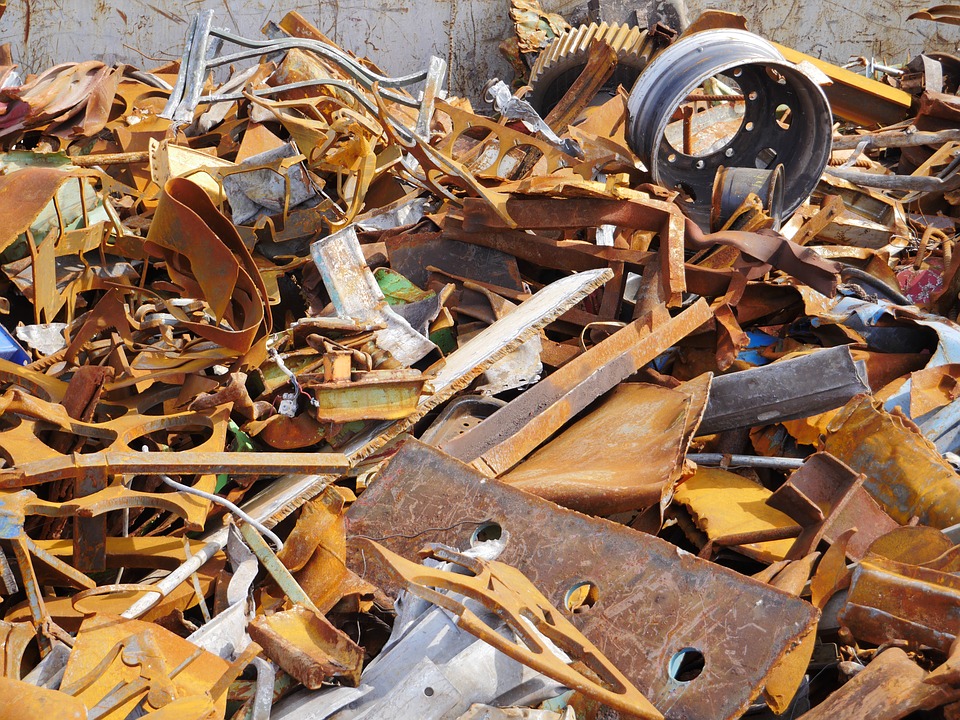Where would modern recycling and sustainability efforts be without the scrap metal industry? That’s a pretty valid question, considering the scrap metal industry plays a huge role in these efforts, offering economic and environmental benefits worldwide. In 2024, the industry faces numerous challenges and shifts that have to do with geopolitical tensions, regional disparities, and market dynamics. This article will cover many of the current happenings in the scrap metal industry, exploring the latest trends, pricing changes, and global market dynamics.
Current Trends in Scrap Metal Pricing
Various global and regional factors have made scrap metal prices incredibly volatile these days. In the past, scrap metal pricing would follow steel market trends, but this year has seen significant fluctuations. For example, while steel prices have been high in general, scrap prices actually went down in early 2022, spotlighting the cracks forming between the two commodities.
Regional Differences
Different U.S. regions also have huge differences in pricing and demand for scrap metal. The Southern U.S., for example, has seen rises in demand due to robust activity in steel mills, which positively impacts the scrap industry in that area. Meanwhile, there are operational challenges in the Midwest, like steel mill shutdowns and furnace outages, so local mills aren’t buying as much scrap metal.
The ongoing Russia-Ukraine conflict also plays a huge role in this volatility. Both countries are major exporters of scrap, pig iron, and other metal products. As the war continues, it disrupts the availability of these materials, increasing demand in the U.S. and driving up domestic prices. As a result, U.S. mills now need to compete for materials like pig iron, which has become less available due to geopolitical constraints.
Regional Disparities and Local Challenges
There are challenges unique to different regions of the US that also impact the scrap metal market. For instance, in Illinois, there’s been significant local controversy over the relocation of the General Iron automobile shredder plant, a huge destination for junk car towing. The new plant was blocked from opening by Chicago Mayor Lori Lightfoot because the community opposed it, seeing the facility as a potential environmental hazard. This action displaced many jobs and created a sense of uncertainty in the local scrap metal market.
This case illustrates the broader challenge of balancing industrial growth with community concerns. Even in regions with high demand for scrap metal, such local issues can ripple throughout the industry, influencing both supply and pricing.
Global Market Dynamics
On a global scale, international trade flows, geopolitical events, and economic conditions are shaping the scrap metal market. The U.S. is still the largest exporter of scrap metal, shipping about 15 to 17 million tons of ferrous scrap annually over recent years. A lot of this scrap metal is gathered from recycling activities like junk car towing. However, key markets like Turkey, the largest overseas importer, have their own challenges. Their currency has gotten much weaker compared to the US Dollar recently, causing U.S. scrap exports to Turkey to decline, so materials from other regions become more competitive.
Other countries, like Mexico, Vietnam, and Taiwan, have become increasingly significant importers. Mexico, for example, has seen a rebound in demand for scrap as its auto production sector recovers. Similarly, Vietnam and Taiwan have increased their scrap imports in recent years, reflecting a shift in global market dynamics.
Nonferrous and Ferrous Scrap Trends
The market for nonferrous scrap metals, like copper and aluminum, has also been highly volatile. Copper prices have risen sharply, while aluminum has had a more sustained increase over the past year. Various factors drive these trends, including geopolitical tensions and supply chain disruptions. The ongoing conflict between Russia and Ukraine, both major exporters of metals, has led to increased uncertainty and price volatility in these markets.
In the ferrous scrap market, supply constraints and rising demand cause prices to increase as well. U.S. mills will likely rely more on domestic production to meet the growing need for scrap metal, which could lead to further price increases for ferrous and nonferrous materials.
The Future of Scrap Metal Industry
There’s a mixed outlook for the future of the scrap metal industry. Demand is expected to stay strong, especially for metals like copper and aluminum, but ongoing challenges such as geopolitical tensions, regional disparities, and regulatory pressures could make things more volatile. Moreover, the push for more sustainable practices and recycling efforts will likely drive innovation in the industry, creating new opportunities for growth.
For stakeholders in the industry, staying on top of current trends and understanding the regional and global dynamics at play is incredibly important. Additionally, with the demand for scrap metal increasing, there is likely to be a growing need for services related to it, like junk car towing, as individuals and businesses look to recycle vehicles and other scrap materials more frequently.
Leveraging Scrap Metal News
The scrap metal industry in 2024 has tons of opportunities and challenges. With fluctuating prices, regional disparities, and global market dynamics influencing the scrap metal industry, anyone involved in the sector needs to stay informed. As the world moves towards more sustainable practices, the importance of scrap metal recycling practices like junk car towing will only continue to grow. Understanding these trends and their implications can help industry stakeholders adapt to the evolution of the market and make strategic decisions for the future.




